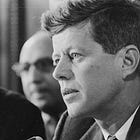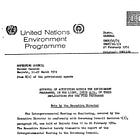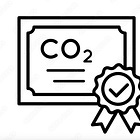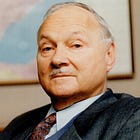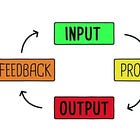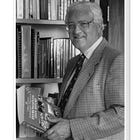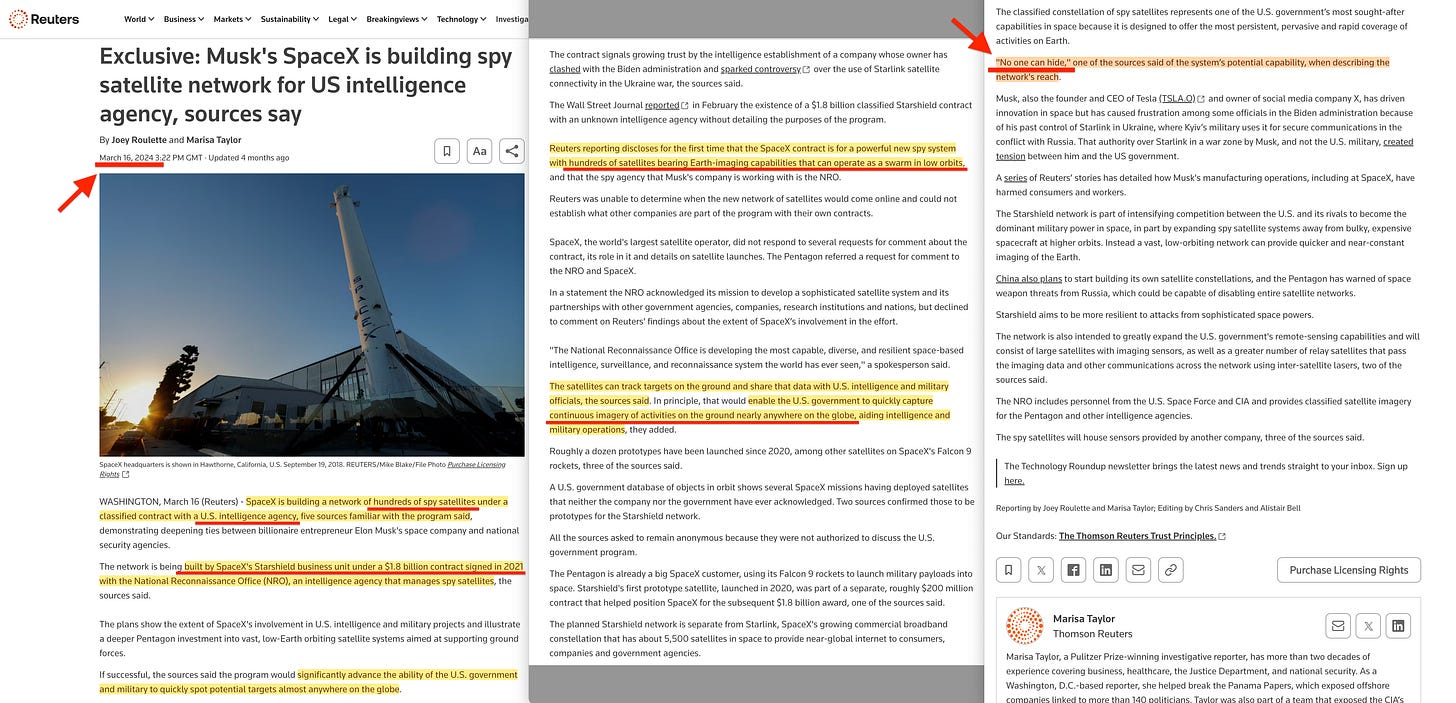In May 1972 — as headlines focused on the SALT arms talks1 and the upcoming UN environmental summit in Stockholm2 — the United States and Soviet Union quietly signed an environmental treaty that would change everything.
The 'US–USSR Agreement on Cooperation in the Field of Environmental Protection'3 —signed between two supposed ideological opposites — has been almost completely ignored by historians. Yet, buried in government archives is a paper trail that reveals that members of the Cold War's biggest enemies were quietly working together to build the technocratic system we live under today.
This is an extended, accessible version of ‘Discovery’.
The Kennedy Resistance & Assassination
When JFK appointed Robert McNamara as Defense Secretary in 19614, McNamara brought the Planning-Programming-Budgeting System5 (PPBS) from Ford Motor Company. PPBS is a data-driven management system using computer analysis and cost–benefit calculations — replacing military tradition and gut instinct with spreadsheets and algorithms.
Initially, PPBS worked as intended — responding to Eisenhower's warnings about the military-industrial complex, JFK used it to force Pentagon cost-benefit analysis and strong-arm military commanders into accepting spending cuts. The system enraged the Joint Chiefs, who saw their authority being undermined, handed over to systems analysts and their computers.
But after the Cuban Missile Crisis, Kennedy began questioning whether strategic decisions should be made by systems analysts using computer models. During the crisis, JFK had rejected McNamara's analysis which recommended strategic bombing of Soviet missile sites — a decision that could have triggered nuclear war, and one based on incomplete information that the computer models couldn't account for.
The same scepticism showed in his approach to information centralisation. In 1961, Kennedy personally championed the National Library of Medicine’s modernisation, signing Public Law 87-2626 to fund a new facility at the NIH and later overseeing the roll-out of MEDLARS7, the first large-scale computerised retrieval system in medicine. But when proposals emerged in 1963 to expand PPBS-style data management into a National Information Center8, Kennedy declined to back it9. The idea stalled in congressional hearings that autumn, leaving unrealised a centralised, cross-domain data hub that would have drawn in information from across every scientific and technical sphere.
With JFK’s refusal to back the proposed National Information Center, and with Robert Amory Jr. removed from his post as CIA Deputy Director, Kennedy went further — ordering a wiretap on the senior officer who had been investigating the use of PPBS within the agency10 — a clear sign he saw him as a genuine threat.
Only weeks after the final hearing on the National Information Center, on 22 November 1963, Kennedy was assassinated. Within days, everything changed. Johnson reversed Kennedy’s planned Vietnam withdrawal and, more importantly, began issuing executive orders in health, environmental, and financial policy — laying the foundation for the economy-wide systems data modelling that would follow.
The technocratic faction Kennedy had worked to purge was back in business — this time with no resistance from the White House. By 1965, Johnson had instituted PPBS across every branch of the administration.
The Memo That Started Everything
On September 17, 1969, White House advisor Daniel Patrick Moynihan sent an internal memo that should have rocked the world upon its 2024 declassification11. The memo supposedly warned about rising carbon dioxide levels — though it didn’t ultimately appear to know much (if anything at all). But what is significant is that it made a startling recommendation:
I would think this is a subject that the Administration ought to get involved with. It is a natural for NATO. Perhaps the first order of business is to begin a worldwide monitoring system.
Consider the implications. In 1969 — at the supposed height of the Cold War — a US official was suggesting that NATO should run global surveillance. The same NATO created to contain Soviet expansion was now being positioned to monitor the entire planet.
Within months, Nixon12 established the 'NATO Committee on the Challenges of Modern Society' with Moynihan as its head13. The committee's mission? Global environmental monitoring in the name of protecting the planet14.
Key Players
When Moynihan stepped down around a year later, he was replaced by Russell E. Train. In case you never heard of him, he was one of the most connected environmental officials in American history. Train wasn't just running NATO's environmental program. He was simultaneously:
Head of the US Council on Environmental Quality15
Co-founder of the World Wildlife Fund16
Board member of the Rockefeller-funded Conservation Foundation17
A key figure in the International Union for Conservation of Nature18 (IUCN)
In other words, Train was the American establishment's point man for turning environmentalism into policy. But the remarkable part is who he was secretly negotiating with.
The SCOPE Blueprint
The Scientific Committee on Problems of the Environment19 (SCOPE) was created in 1969 as part of the International Council of Scientific Unions20 (ICSU). Much like the ICSU itself, SCOPE was funded by major foundations and tasked early on with one primary mission: designing a global environmental monitoring system.
SCOPE's first report21 was commissioned in 1971 by Maurice Strong for the 1972 United Nations Conference on the Human Environment in Stockholm; the conference which ultimately led to the creation of the United Nations Environment Programme (UNEP). Post-conference, Strong tasked SCOPE with developing an implementation strategy. This yielded SCOPE's third report, an action plan for the UNEP Global Environmental Monitoring System22 (GEMS), which launched in 197423. The report detailed exactly how to monitor air, water, climate, ecosystems — even human health and their determinants — on a global scale.
A member of this environment, Viktor Kovda wasn’t just any Soviet scientist. In 1946, he helped make ICSU an early partner of UNESCO, cementing decades of collaboration between Soviet science and Western international institutions — many founded or influenced by 1930s British Marxists such as Joseph Needham and JD Bernal, both present at the 1941 event widely considered promotional for scientific socialism; Science and World Order.
By the time SCOPE was created in 1969, Kovda was a senior member, and he later rose to be become SCOPE’s president in 1973. Kovda thus was directly involved with SCOPE during their pivotal early years during which GEMS was designed. And the GEMS-designing SCOPE itself was founded at the express same time as Moynihan’s call for NATO to run global surveillance on the environment.
The striking part here is the timing. In the early 1970s there was no credible science justifying a planetary monitoring apparatus of this scope. The later ‘climate consensus’ only began to take shape at the first World Climate Conference in 197924, long after this infrastructure was already in place. Even the fusion of incomplete environmental science was still being discussed through the 1975 Belgrade Charter25, at a time when no one could say with confidence whether global temperatures were increasing or declining — with Bert Bolin, arguably the most influential climate scientist of the 1970s, admitting as much before the House of Representatives in 197626.
The cart came before the horse.
The surveillance architecture was built before anyone could say with any level of certainty that there was even a problem in the first place.
The Moscow Connection
In late 1971, Secretary of State Henry Kissinger asked Russell Train to fly to Moscow for environmental cooperation talks27.
The Soviets knew exactly who they were dealing with. Viktor Kovda would have been fully aware of Train’s dual mandate, simultaneously running NATO's global environmental monitoring program through the Committee on Challenges of Modern Society. And if Kovda knew, Moscow would have known, too.
On May 23, 1972, Train's negotiations produced the 'Agreement on Environmental Protection' between the US and USSR. The treaty called for cooperation in air pollution monitoring, climate research, and 'joint development and implementation in the fields of basic and applied sciences' — diplomatic language for shared infrastructure yielding common research output.
Think about the implications: By negotiating with dual-mandate Train, Moscow knowingly advanced NATO’s surveillance ambitions under the cover of environmental cooperation. No genuine rival would have realistically done so. This wasn't competition between rival superpowers — it was coordination between supposed adversaries building the same control system.
The 1970s Institutional Setup
While Train and Kovda facilitated the surveillance treaty, the domestic framework was being constructed through Nelson Rockefeller.
In 1973, Nixon established the Commission on Critical Choices for Americans, putting Nelson Rockefeller in charge alongside Ford, Kissinger, and Shultz. Funded through Rockefeller’s Third Century Corporation28, the study let him bankroll his own policy prescriptions — shaping everything from energy strategy and resource management to America’s role in a new global order. Conveniently, just as Brzezinski’s Trilaterial Commission came to be.
In August 1974, Nixon fell due to Watergate. Ford became president and appointed Rockefeller Vice President. The man funding studies on America's future was now in a position to implement them — while his brother was deeply involved with Brzezinski’s Trilaterals29.
In May 1976, Congress passed the National Science and Technology Policy Act30, creating the Office of Science and Technology Policy (OSTP) and establishing legal framework for 'using science to make policy', a framework ultimately used to bypass democratic input in favor of 'expert consensus' — and one that became the legal foundation for crisis-driven policy decades later.
The Same Faces Everywhere
When you start digging into the backgrounds of these key figures, a tight network emerges. Train didn't just co-found the Conservation Foundation — he did it with major Rockefeller funding. That same Rockefeller money had funded Roger Revelle's pioneering climate research back in 1954 which culminated with Keeling’s experiments in 1957. But he further helped organise the 1963 'carbon consensus' by the Conservation Foundation that created the first ‘scientific’ justification for global environmental action, later used to enable conferences and commissions leading up to Moynihan’s 1969 memo. Resources for the Future — which developed the economic theories underlying environmental policy — also ran on Ford and Rockefeller foundation money.
Meanwhile, both Train and Kovda moved seamlessly between these American foundations and UNESCO's environmental programs. The 1968 UNESCO Biosphere Conference — where Kovda was a key participant — called for global environmental surveillance and 'balance between man and nature', through recommendation 3 penned by Rockefeller man, Rene Dubos. Meanwhile, UNESCO's Man and the Biosphere program was explicitly designed to create international nature reserves under global management.
The same pattern shows up at the International Union for Conservation of Nature (IUCN) which created the first formal classifications for protected nature reserves31: Train sat on the IUCN board while Kovda worked closely with their programs. The IUCN developed the proposals32 that became UNESCO's World Heritage Convention — and today it's the IUCN pushing the '30 by 30' land grab policies33 that would put 30% of the Earth under international ‘protection’ by 2030.
The most remarkable thing about this story is how systematic it was. At each step, the same foundations provided funding, the same organisations provided platforms, and the same people made the key decisions.
It was a network of aligned interests working toward the same goal.
Incidentally, the same foundations had earlier backed a more direct approach. In 1961, CIA Deputy Director Robert Amory Jr. and Arthur Schlesinger Jr. proposed a 'World Congress for Freedom and Democracy' that would bring together (Third System) 'public and private entities, lobbies, interest groups' under global administration. When Kennedy unexpectedly let Amory go, did they perhaps pivot to Plan B — the environmental surveillance route?
The Secret Deal
But that doesn’t explain why the Soviet Union would go along with this. The answer could realistically lie in a meeting that was never truly challenged.
In 1964, at the height of the Cold War, David Rockefeller made a mysterious trip to Moscow. The official story was trade discussions34, but consider the timing: this was just two years after the Cuban Missile Crisis, when relations were supposedly at their worst. What business did America's most powerful banker have with the enemy?
We may never know what Rockefeller actually discussed with Khrushchev, but we can judge by what happened next. Within months of Rockefeller's visit, Khrushchev was suddenly ousted from power in October 196435, replaced by Alexei Kosygin and Leonid Brezhnev — the very men who would later implement the new technocratic system.
Then came the smoking gun: in 1965, both superpowers simultaneously implemented nearly identical management systems. Johnson mandated PPBS across all US government agencies. Kosygin introduced OGAS36 — a nationwide automated system for economic planning.
But these weren't just similar in purpose — they were mathematically identical. Both used the same input-output analysis that McNamara's PPBS relied on, a technique created by Wassily Leontief that was adopted by both Pentagon systems analysts and Soviet central planners. The analytical techniques developed for one system could be directly applied to the other with minimal modification — revealing coordinated development rather than coincidence. The mathematical probability of two adversarial systems spontaneously adopting identical frameworks in the same year without coordination? Essentially zero.
In other words — it appears likely that both sides secretly agreed to build the same technocratic control system. The only difference was the branding. But underneath the rhetoric, both were implementing identical surveillance and management infrastructures.
And then came NSAM 34537 from 1966, openly calling for US-Soviet cooperation in scientific and environmental domains.
Building the Machine
The 1972 US-USSR treaty wasn't really about environmental protection — it was about creating the institutional framework for global surveillance systems. As a senior member of SCOPE — the organisation tasked with designing global environmental monitoring systems — Kovda would have been fully aware of Train's dual role running NATO's global monitoring programme alongside the environmental negotiations.
Not only did Moscow knowingly cooperate with the people who were developing NATO's environmental surveillance capacity — but they even signed the dotted line on the agreement. Why would a supposed adversary agree to that? Did the USSR outmaneuver Train — or were they simply cooperating all along?
Neither possible answer looks particularly good on the Rockefeller cohort.
Within months of signing the treaty, UNEP GEMS was built. In 1973, Viktor Kovda became president of SCOPE, who published their ‘action plan’ blueprint for the Global Environmental Monitoring System (GEMS), detailing how to monitor air, water, climate, and ecosystems worldwide in impressive detail.
By 1974, GEMS was operational, with public health surveillance data and socio-economic data soon integrated. By 1978, Michael Gwynne became GEMS director, and by 1984, GEMS operated across more than 30 global networks with most world governments participating in data collection. And by 1985, UNEP announced the Global Resource Information Database (GRID), promising to store massive amounts of data inclusive of geographical information systems, enabling layered maps and thus detailed investigation. But GRID didn’t just store environmental data — its mandate included 'socio-economic variables', later known as 'determinants of health'. The system was correlating environmental conditions with human behaviour, economic activity, and social patterns.
By the 1990s, the template was proven, technology operational, legal framework established.
They just needed a new crisis.
The Austrian Connection
But raw surveillance data is useless without analysis. That's where the International Institute for Applied Systems Analysis comes in38.
Just months after the May 1972 environmental agreement was signed, both superpowers collaborated to establish IIASA in neutral Austria. IIASA's mission? To perform global computational modelling using data streams from the surveillance systems they had just agreed to build.
It was the logical next move — the treaty had already laid the groundwork for global data collection. IIASA would process that data through ‘black box’ computer models that ordinary people couldn't understand or even challenge. The models would generate predictions, leading to 'scientific' recommendations that global institutions could use to justify increasingly intrusive policies.
IIASA was positioned to establish the 'best available science' for both superpowers to be implemented into policy. That the two systems used fundamentally different political ideologies — capitalism versus socialism — didn't matter. Because through policy, both would act on the same alarmist insights generated in Austria.
But what’s of further note is that the IIASA consider the genesis moment to have taken place shortly after LBJ mandated the use of PPBS in federal government39.
The Climate Cover Story
An alleged environmental crisis was the perfect cover story for this surveillance build-out. Who could oppose monitoring systems designed to save the planet from armageddon? Who would question international cooperation on such an obviously noble cause?
Framing surveillance as environmental protection automatically makes opposition look unethical, anti-science, even anti-life. Questioning the monitoring becomes questioning the crisis. Questioning the crisis becomes denying the science. It's a closed loop that shuts down debate before it even begins. A template well and alive today, should you attempt to discuss the legitimacy of IPCC reports.
As for the science itself — that typically followed a policy need; not the other way around. Nikita Moiseev, for instance, was well aware that climate modelling was a fools’ errand back in the 1970s. Yet, he persisted.
This is further evidenced by the chronology of events taking place in the Soviet Union in the 1960s and early 1970s. The ‘climate crisis’ — in no uncertain terms — is completely made up. Yuri Izrael’s role alone makes that perfectly clear.
But the same template that worked for climate surveillance proved to work perfectly for health surveillance just as well. The organisations, the justifications, even the language remained almost identical:
1968 UNESCO Biosphere Conference: 'Man must establish balance with his environment to maintain his health and well-being'
2004 Manhattan Principles: 'One World, One Health' seeks to balance humanity with nature through surveillance and intervention
2025 WHO Pandemic Treaty: Calls for 'balance between humans, animals, and environment' enabled through the ‘One Health approach’
Under the Clinton and Gore administration, the Office of Science and Technology Policy — the very same OSTP that institutionalised expert rule — recommended expanding the surveillance networks to include infectious diseases. In 1997, the Department of Defense established Global Emerging Infections Surveillance (GEIS).
GEIS supposedly protects deployed forces, but their 2023 Strategic Plan reveals wide scope: climate change, migration, animal health, antimicrobial resistance, environmental reservoirs, real-time genomic sequencing, and wastewater surveillance. GEIS relies 'almost exclusively on laboratory partners' — integrating civilian networks with military intelligence. It operates under the 'One Health approach' which treats human, animal, and environmental health as a single, ‘holistic’ integrated system.
The Evolution
The expansion happened in stages, each one seeming reasonable by itself.
At the Second World Climate Conference in 199040 — a major international gathering of scientists and government officials — the focus shifted from general environmental monitoring to global satellite surveillance. The justification was simple: to properly track climate change, we need eyes in the sky watching the entire planet, all the time.
By 2005, GEMS had been all but absorbed into the Global Earth Observation System of Systems, or GEOSS41. Despite the bureaucratic name, GEOSS is remarkably straightforward — it's a network that monitors everything, everywhere, in real time, and it further enables specialised derivatives, such as EO4HEALTH42 relating to public health surveillance, and GEO BON relating to biodiversity43.
The 2019 Canberra Declaration marked another major escalation, calling for live-streamed satellite surveillance capabilities made possible through Surrey Satellite Systems’ 2018 breakthrough. This wasn't just about taking occasional satellite photos anymore — this was about continuous, real-time monitoring from space.
In March 2024, Reuters revealed that Elon Musk's SpaceX had been secretly building a $1.8 billion spy satellite network called ‘Starshield’ for U.S. intelligence agencies since 202144. The network promises ‘continuous imagery of activities on the ground nearly anywhere on the globe’ — precisely the kind of live-streamed satellite surveillance that the 2019 Canberra Declaration45 had called for. What was outlined as a global goal in 2019 had quietly become operational reality by 2024, with sources describing capabilities where ‘no one can hide’ from the system's persistent coverage.
Picture Google Earth — but instead of static images, it’s streaming every corner of the planet in real time. Weather patterns, crop yields, population movements, resource extraction, urban growth, even individual vehicles and ships are tracked continuously. All of it feeds into central databases, where Digital Twins and artificial intelligence sift the data for patterns, predict trends, and flag anomalies.
Your morning commute becomes just another data point: route, speed, and timing logged automatically. Multiply that by millions of vehicles, and AI can model traffic flows, identify unusual movements, and detect deviations from established routines.
For those in power, it’s the ultimate management tool — a system that sees everything, forecasts outcomes, and enables intervention. For everyone else, it’s the erosion of privacy, the end of unobserved life, and a quiet dismantling of the freedom to move unseen.
From future climate lockdowns and biodiversity land grabs to the manufactured ‘meta-crises’ (which can be used to justify endless lockdowns) and recent pandemic restrictions — the lineage runs straight back to IIASA’s modelling operations, fed by the surveillance networks Train and Kovda set in motion in the early 1970s. Yet, it’s hard to imagine this system taking root had the erratic Khrushchev and the systems-resistant JFK remained in power.
They quite simply had to go.
Why This Matters Today
Understanding this history explains why today’s global institutions feel so undemocratic and unaccountable. They were built by technocrats convinced that scientific experts should direct human affairs through data collection and systems analysis — tools that have since evolved into Digital Twins and artificial intelligence.
Every major ‘crisis’ demanding global cooperation — climate change, pandemics, biodiversity loss — delivers the same prescription: more monitoring, more data, more control by experts. This is no accident, but the direct continuation of the system Train and Kovda began building in the early 1970s.
The network first built for environmental monitoring became the backbone for climate tracking and carbon accounting, pandemic surveillance and health passes, biodiversity oversight and land-use controls — even financial surveillance through digital currencies.
Each crisis expands the system. Each expansion becomes the new normal.
The ratchet only ever moves in one direction.
The Hidden Victory
The most important thing about the 1972 US–Soviet environmental treaty is what it signified: the moment technocratic management began to eclipse ideological rivalry as the engine of global affairs.
Behind the Cold War theatre, Washington and Moscow set aside capitalism-versus-communism to agree on a deeper premise — that human society should be managed scientifically. Both accepted that experts with data should make the key decisions, especially on environmental issues; that global problems demanded global solutions; and that surveillance was essential to effective control.
The US and USSR ultimately agreed on everything that mattered for real power. Ideological differences became window dressing — two rhetorical frameworks serving the same technocratic project. A distraction that kept the public from asking deeper, more fundamental questions. The deeper realisation was that capitalism and communism could be fused through a shared, data-driven focus on environmental management, modelled by IIASA.
When the Berlin Wall fell in 1989, it was not the triumph of freedom over tyranny, but the culmination of a process set in motion with Nixon’s 1972 signature: the fusion of rival systems into a single global management regime, run by interconnected networks of experts, foundations, and international organisations — all under the banner of environmental protection.
Russell E. Train and Viktor Kovda are now long gone, but the network they helped build lives on — larger and more powerful than ever. The surveillance systems they set in motion have matured into a machinery edging toward total social management.
Understanding this history won't necessarily stop what's coming. But it might help you see through the next crisis, the next emergency, the next expert demand for more monitoring and control in the name of ‘saving humanity’… from itself.
Now you know the pattern. You know how ‘rivals’ collaborate. You know why the solution is always more surveillance and less freedom.
And you know none of it happened by accident.
But did you know Gorbachev all but admitted it in November 1987 — in a speech that openly outlined the cooperative framework they’d spent decades building?
To Feel Responsible for the World's Destiny
The recent post on Lenin’s New Economic Policy left a crucial question open.
Anticipated Objections and Responses
‘This is just correlation, not causation - you're seeing patterns that aren't there’
The mathematical precision of the timing destroys this objection. When two supposed adversaries simultaneously implement identical systems using the same analytical frameworks in the same year (1965), after a key meeting between one side's most powerful banker and the other's leadership (1964), followed by immediate policy reversals and personnel changes - this isn't correlation. It's coordination. The probability of organic convergence on Leontief's input-output analysis techniques, implemented simultaneously by hostile powers, approaches zero.
‘Environmental cooperation was normal during détente - this proves nothing unusual’
This wasn't typical environmental cooperation. Train was simultaneously running NATO's global surveillance program while negotiating surveillance infrastructure with Moscow. No genuine adversary knowingly advances their opponent's intelligence capabilities under any cover. The Soviets knew exactly who they were dealing with — Kovda would have briefed Moscow on Train's dual mandate. Moscow's agreement to cooperate wasn't environmental policy; it was strategic coordination.
‘You're cherry-picking evidence to fit a predetermined conspiracy theory’
The evidence is overwhelming and sourced extensively. The same foundations funded the research, the same people made the decisions, the same institutions provided platforms, and the same outcomes emerged across decades. This isn't cherry-picking — it's pattern recognition. When Rockefeller money flows to Revelle's climate research (1954), the Conservation Foundation's carbon consensus (1963), Train's environmental negotiations (1972), Nelson Rockefellers Critical Choices study followed by him positioned to implement, David Rockefeller’s role with the Trilateral Commission, Laurance Rockefeller’s emphasis on the justification — environmentalism — and IIASA's global modelling operations, that's not coincidence — it's a funded network executing a plan.
‘The Cold War had real tensions and proxy wars - it can't have been theater’
Surface tensions and proxy conflicts served the theater perfectly. Regional conflicts kept populations focused on ideological rivalry while the real coordination happened at the technocratic level. Both sides needed the appearance of opposition to maintain domestic legitimacy while building identical control systems. The proxy wars were management theater - deadly serious for the participants, but strategic misdirection for the architects.
‘Similar management systems could have evolved independently due to shared technological challenges’
Independent evolution doesn't explain mathematical identity. PPBS and OGAS didn't just address similar challenges — they used identical analytical techniques developed by the same economist (Leontief). Both systems emerged in 1965, months after Rockefeller's Moscow visit and Khrushchev's removal. Independent evolution doesn't produce simultaneous implementation of identical frameworks by hostile powers.
‘Where's the smoking gun document proving coordination?’
The documented evidence is the smoking gun. We have Rockefeller's 1964 Moscow meeting, simultaneous 1965 system implementations, Train's dual NATO + environmental mandate, ICSU+SCOPE funding, Kovda's awareness of Train's role, the signed 1972 treaty, and IIASA's immediate establishment. The coordination is in plain sight — it just wasn't labeled ‘secret conspiracy’. Elite coordination often happens through legitimate channels, documented in official records.
‘JFK and Khrushchev could have been removed for conventional political reasons’
Conventional explanations ignore the systematic policy reversals that followed. Kennedy's assassination immediately enabled Johnson's PPBS expansion and Vietnam escalation — exactly what the technocratic faction wanted. Khrushchev's removal enabled Kosygin's OGAS implementation — precisely the management system needed for coordination. The timing isn't coincidental when the outcomes perfectly serve specific institutional interests.
‘International scientific cooperation through organisations like SCOPE was normal’
SCOPE wasn't normal scientific cooperation — it focused on surveillance architecture design followed by justification of what was proposed surveilled (alleged climate change). Created in 1969 (same year as Moynihan's NATO surveillance memo), SCOPE's mission was building global monitoring systems before any scientific consensus justified them. The cart came before the horse: surveillance infrastructure was designed before climate science supported it. This wasn't research — it was infrastructure planning with scientific cover.
‘Technocratic management naturally evolved as societies became more complex’
Natural evolution doesn't require secret coordination between supposed enemies. The 1972 US-Soviet environmental treaty wasn't natural evolution — it was strategic cooperation to build surveillance systems while maintaining the appearance of rivalry. Natural evolution also doesn't produce identical mathematical frameworks implemented simultaneously by hostile powers after private banker meetings with enemy leadership.
‘Extraordinary claims require extraordinary evidence - you haven't met that standard’
The evidence is extraordinary. We have documented meetings, signed treaties, simultaneous policy implementations, identical technical systems, coordinated institutional development, and systematic personnel overlaps across decades. What's extraordinary is how thoroughly documented this coordination is. The conventional Cold War narrative requires believing that two mathematical identical systems emerged simultaneously by pure coincidence after private meetings between banker and enemy leadership, organised through an institution in neutral Austria. That's the extraordinary claim requiring extraordinary evidence.









